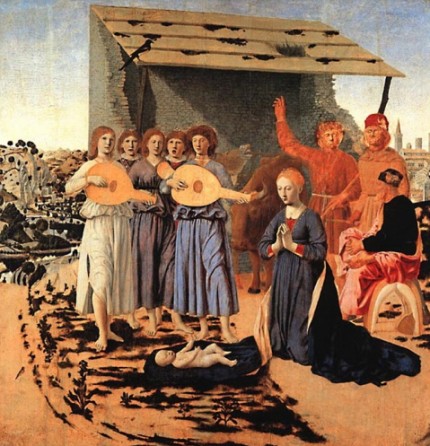William Ferris Chorale looks back to its roots to open 40th season
Although there were plenty of community choirs available for singers of all talent levels to ply their craft, small and well-focused a cappella choruses that required a professional-level degree of talent, discipline and commitment were still a relative rarity in the area forty years ago when the William Ferris Chorale was formed.
Not only did the Ferris Chorale magnificently help to fill that niche, but it also created a substantial body of literature for, along with high performance standards that would have a domino effect on many other younger choral groups in a city now filled with them.
As such, it was fitting that the William Ferris Chorale began its 40th anniversary season Saturday night at Loyola University’s Madonna della Strada Chapel with the Christmas repertoire most associated with the Chorale in a nostalgic program of festive pieces that celebrate the Chorale’s long legacy.
True, Ferris himself, who died suddenly eleven years ago while conducting a rehearsal of the Verdi Requiem, is not here to celebrate this milestone in person, yet his spirit and dedication have remained tangible in the group that bears his name. Chorale cofounder and artistic director John Vorrasi remains a vital presence and Ferris’s successor as music director of Our Lady of Mount Carmel Paul French is a powerful Ferris advocate.
The evening began, appropriately enough, with Ludovico da Viadana’s Exsultate Justi — the work that opened the Chorale’s first-ever concert, and which was performed so often in the group’s early days that it became known as the “WFC Theme Song,” This, Peter Phillips’ Salve Regina and Richard Deering’s Quem Vidistis Pastores formed a Renaissance triptych that spotlighted the full-bodied and lively approach to Renaissance polyphony that has long been a Chorale hallmark.
Ferris’s mentor, Chicago composer Leo Sowerby was represented by Now There Lightens Upon Us with its neo-Impressionist, almost Messianesque use of harmonics and contemplation which were given a special touch by Thomas Weisflog’s subtle organ accompaniment.
A Polish carol arrangement of Lulajzé Jezuniu commissioned by the Chorale in 1979 from Michael Sullivan, who was in attendance, was given a zesty rendition, as were a group of international carols arranged by Robert Shaw and Alice Parker, the most effective being the French carols Bring a Torch, Jeannette, Isabella and Fum, Fum, Fum.
The centerpiece of the evening was Ferris’s own composition Make We Joy, a 35-minute Christmas cantata he wrote for the Chorale in 1976. This was its first complete Chorale performance since Ferris’ death and it was a real treat to hear this stirring work again.
Inspired by Ferris’ first trip to Europe and his encounter with Piero della Francesca’s fresco The Nativity, the nine-movement work juxtaposes medieval texts with a contemporary narrative by John Vorrasi.
It is a work of extraordinary beauty and depth, which manages to make the chorus the “star” of the proceedings by carefully choosing exactly when and how it is used to maximize its effectiveness. The instrumental sections have a subtle chamber music-like quality to them, often serving as aural transitions between the movements, sometimes evoking text painting within the movements themselves.
The flute intones the piece with a whole-step musical gesture from nothingness, answered by cello, to evoke a world covered in the darkness of man’s Fall waiting for Redemption, evocatively invoked by baritone Hans Royal-Hedinger. The chorus enters intoning the static, bound position of Adam used metaphorically (the Hebrew word means Man) and recalling in dramatic fashion the act of Original Sin.
A Wagnerian horn call acts as the angelic trumpet and the birth of Light from a “four thousand year Winter” is announced by contralto Lauren Auge, which gives way to the first choral harmony of the piece, done in lullaby fashion before a lively instrumental march with a Middle Eastern feel that announces the presence of kings and shepherds.
A building chorus of exaltation reaching down from the heavens through the birds evoked in voices and instruments to a stunningly subtle climax — soprano Lisa Rogers Lee sings a jaunty lullaby duet with English horn countermelodies, which gives way to a finale where tenor and chorus alternate in praise and tangy jubilation of various mysteries of the Incarnation.
The vast chapel space is so hugely resonant compared to the Chorale’s old Mount Carmel space that diction was sometimes an issue. That apart, the performance itself was top-drawer across the board, from the vocal soloists to the superb instrumental playing and of course, the chorus itself, with ensemble singing carefully sculpted by French.
Posted in Performances





